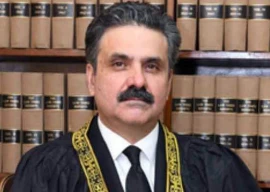
He started out by saying that his politics, ever since he joined in 1985, had been development-oriented. Which was fine until he spelled out what development meant to him. The major problem was that the poor keep migrating to the cities, which creates problems for the urban as well as rural areas. In his view, people won’t move to urban areas if development takes place in rural areas. This requires setting up schools and colleges in rural areas. People will also be discouraged to move if adequate health facilities are provided in these areas. He talked about rural industrialisation for creating jobs and construction of physical infrastructure such as access to gas and electricity in villages. As if this was not enough, he came out in favour of constituency funding, something that in the past has contributed to disastrous development in no small measure. He boasted about being the first prime minister who had allowed equal development funds to be disbursed to opposition parliamentarians and parliamentarians without constituencies — women, minorities and technocrats in the Senate.
Now these are all failed policies of the past. Rather than villagers moving to the cities, the cities are moving towards the villages. Nearly every union council has a basic health unit and above a few of them is a rural health centre, and yet, there is no delivery of health. Rural schools top the list of missing facilities and absentee or ghost teachers. Schemes like ‘one village, one product’ are hardly the spur of rural industrialisation. Electrifying villages from the national grid has added unnecessary losses to power utilities. The result of providing gas will have similar implications for the not-yet-loss-making gas companies. Normal Public Sector Development Programme funding is misused and the funds allocated to parliamentarians in the name of development in their constituencies are not used for development at all.
Some Planning Commission officials have been seen claiming that the age of Mahbubul Haq is gone and we now have a new, Nadeemul Haq growth strategy. Too bad that ‘ul Haq’ was common anyway and now the prime minister’s sufiana kalam has confirmed that ‘Mahbub’ and ‘Nadeem’ also mean the same thing, literally, as well as metaphorically.
As Munoo Bhai, the veteran Urdu columnist, famously wrote, Natha Singh and Prem Singh are one and the same thing — unless we are to assume that the Planning Commission’s strategy is different from the prime minister’s. As the ruling coalition has demonstrated, more often than not, its right hand does not know what the left is doing. And this is further proof of that.
Published in The Express Tribune, February 11th, 2011.
1723032398-0/BeFunky-collage-(36)1723032398-0-405x300.webp)
1730516134-0/Diddy--Lopez-(1)1730516134-0-165x106.webp)



1730531553-0/Express-Tribune--(1)1730531553-0-270x192.webp)

1730533347-0/Untitled-design-(85)1730533347-0-270x192.webp)









COMMENTS (4)
Comments are moderated and generally will be posted if they are on-topic and not abusive.
For more information, please see our Comments FAQ